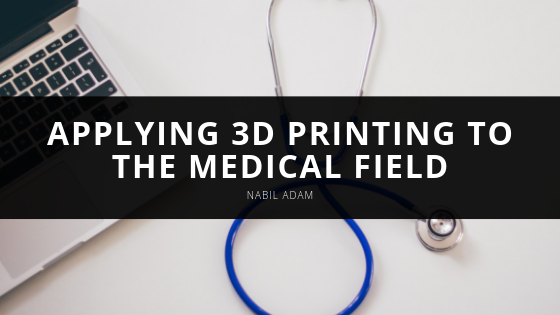The medical field is advancing and shows no signs of slowing down. One technological advancement that is revolutionizing the industry is a 3D printer. Although there may seem no need for a device such as this in the industry, it could transform patient care and potentially save lives. Here are a few ways 3D printing can be applied to the medical field.
Bioprinting Tissues
One of the drawbacks when using traditional medical tools is not being unable to experiment on live tissue and organs in a more humane way. Bioprinting is now changing that. Bioprinting is a form of 3D printing that can layer living cells known as bio-ink through a computer-guided pipette to create artificial living tissue in a laboratory. These tissue constructs are known as organoids and can be used for medical research. The organoids can act as living organs on a miniature scale. Beyond that, they could potentially become a cheaper alternative to organ transplants.
Prepping for Surgery
No matter how skilled or experienced the surgeon, there will always be a risk. The more practice a surgeon can do, the better the chances of every surgery’s outcome. By adopting 3D printing into the medical field, patient-specific organ replicas can be created for surgeons to practice on before performing complicated operations on the patient. Because this technique has been proven to speed up procedures and reduce patients’ trauma, using 3D printing for surgery prep can save lives.
Prosthetic Limbs
The medical field has come a long way in improving the feel and functionality of prosthetic limbs. With the help of 3D printing, it can go even further. 3D printers are able to print the prosthetic limbs for a fraction of the cost of traditional prosthetics. By using the 3D printer, amputees are able to print and use a number of different prosthetics for a variety of household or physical activities. This gives them the opportunity to try them out and see which works best for them. Another benefit of 3D printing prosthetics is it will cut down on the time spent on fitting and measuring, which will be better for patient care.
Medications
Another benefit of applying 3D printers in the medical field is how it can fundamentally change medications. A medication called Spiritam, which became the first 3-D-printed medication to receive FDA approval, was able to simply manufacturing and created tablets that were more porous than traditional medications. Simply put, the tablets were able to disintegrate in the patient’s mouth almost instantly. This is because the tablet’s skin was layered and produced precise active-ingredient dosages, which means a more accurate and cost-effective medication.

